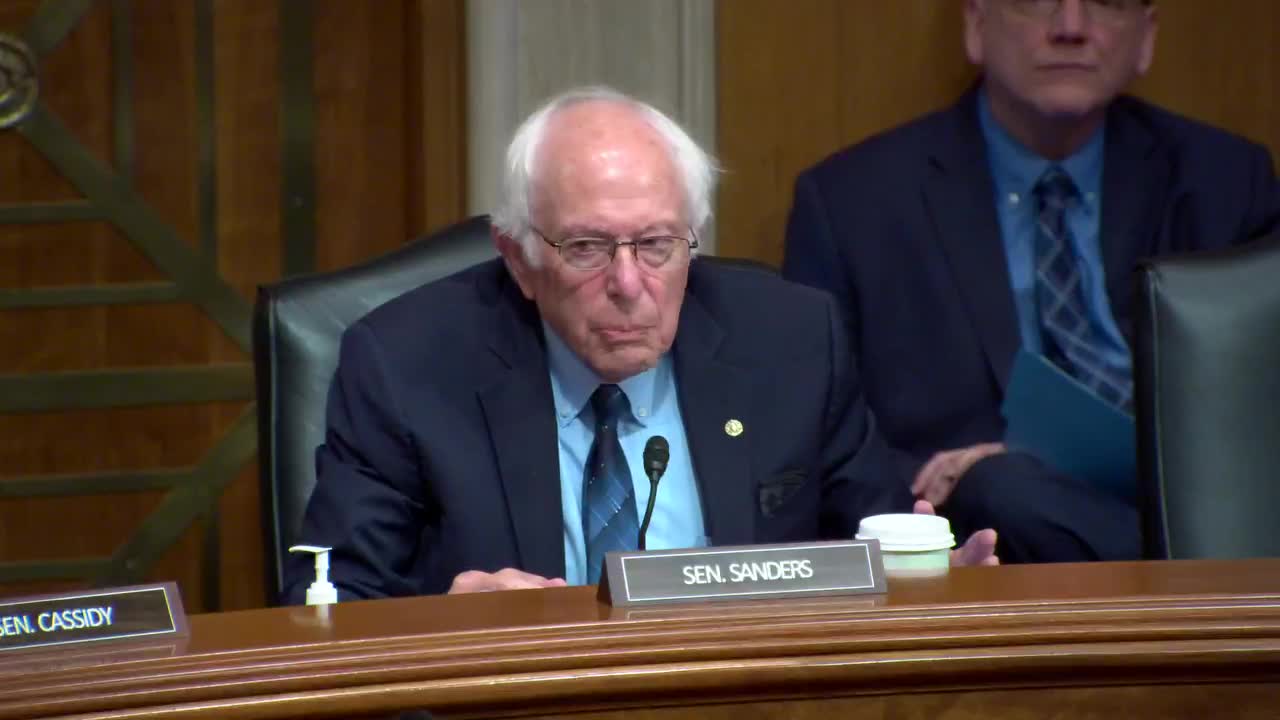Medical debt crisis pushes families to the brink of bankruptcy
July 11, 2024 | Health, Education, Labor, and Pensions: Senate Committee, Standing Committees - House & Senate, Congressional Hearings Compilation

This article was created by AI summarizing key points discussed. AI makes mistakes, so for full details and context, please refer to the video of the full meeting. Please report any errors so we can fix them. Report an error »

In a recent government meeting, lawmakers addressed the escalating crisis of medical debt in the United States, highlighting its alarming impact on American families. Senator Bernie Sanders opened the discussion by revealing that over 66% of personal bankruptcies—approximately 530,000 cases annually—are linked to unpaid medical bills. He emphasized that this crisis is a uniquely American phenomenon, with emergency medical visits potentially leading to the loss of homes and life savings.
The statistics presented were stark: one in four cancer patients faced bankruptcy or eviction due to medical debt in 2022, and 42% of cancer patients depleted their life savings within two years of diagnosis. The meeting underscored that nearly 100 million Americans, or 41% of the adult population, are burdened by a staggering $222 billion in medical debt. Sanders pointed out that the financial strain extends beyond the uninsured, with 61% of insured individuals accumulating medical debt over the past five years.
Senator Bill Cassidy, a physician himself, acknowledged the need to address medical debt but cautioned against viewing it as an isolated issue. He argued that the root cause lies in the high cost of healthcare, which has seen premiums and deductibles rise significantly, often outpacing wage growth. Cassidy noted that hospitals are responsible for more than half of the medical debt, and he urged a thorough examination of existing programs designed to alleviate this burden.
Dr. Abdul El-Sayed, a health officer from Wayne County, Michigan, shared his county's initiative to cancel up to $700 million in medical debt for residents, illustrating the dire situation faced by many. He called for national debt relief and advocated for a single-payer healthcare system, such as Medicare for All, to prevent future medical debt crises.
The meeting concluded with a consensus on the urgent need for systemic reform in the American healthcare system to protect families from the financial devastation associated with medical emergencies. As lawmakers continue to explore solutions, the discussion highlighted the critical intersection of health and economic stability in the lives of millions of Americans.
The statistics presented were stark: one in four cancer patients faced bankruptcy or eviction due to medical debt in 2022, and 42% of cancer patients depleted their life savings within two years of diagnosis. The meeting underscored that nearly 100 million Americans, or 41% of the adult population, are burdened by a staggering $222 billion in medical debt. Sanders pointed out that the financial strain extends beyond the uninsured, with 61% of insured individuals accumulating medical debt over the past five years.
Senator Bill Cassidy, a physician himself, acknowledged the need to address medical debt but cautioned against viewing it as an isolated issue. He argued that the root cause lies in the high cost of healthcare, which has seen premiums and deductibles rise significantly, often outpacing wage growth. Cassidy noted that hospitals are responsible for more than half of the medical debt, and he urged a thorough examination of existing programs designed to alleviate this burden.
Dr. Abdul El-Sayed, a health officer from Wayne County, Michigan, shared his county's initiative to cancel up to $700 million in medical debt for residents, illustrating the dire situation faced by many. He called for national debt relief and advocated for a single-payer healthcare system, such as Medicare for All, to prevent future medical debt crises.
The meeting concluded with a consensus on the urgent need for systemic reform in the American healthcare system to protect families from the financial devastation associated with medical emergencies. As lawmakers continue to explore solutions, the discussion highlighted the critical intersection of health and economic stability in the lives of millions of Americans.
View full meeting
This article is based on a recent meeting—watch the full video and explore the complete transcript for deeper insights into the discussion.
View full meeting